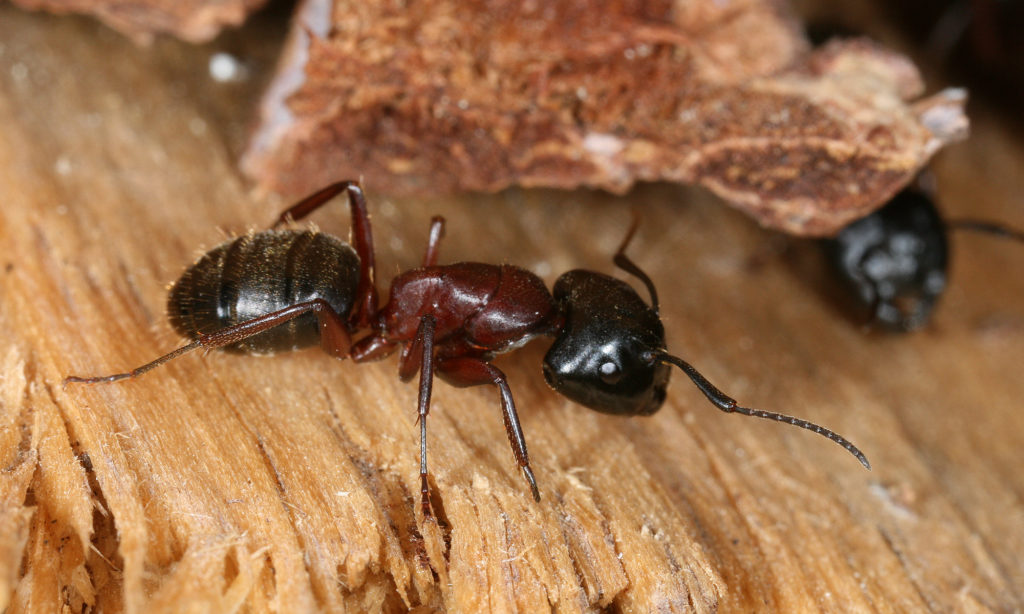When left unchecked, carpenter ants can pose a legitimate threat to your home. Eliminating them is not a simple process and best left to a professional. If, however, you are determined to handle the problem on your own, there are a few approaches that may be effective.

Identifying carpenter ant colonies
First, determine if these are indeed carpenter ants and assess the severity of your problem. Carpenter ants are black or red, and slightly larger than other ants, usually about 1/4 inch long. Closely examine the area where you have seen the ants. Although they favor damp, dead wood, they will tunnel through dry wood to get to where they want to be. A small bit of sawdust left behind by ants could mean you have a grim predicament.
The ants you have seen are only a small portion of the population you are fighting. Ants have colonies, sometimes a parent colony with the queen, who lays eggs, and several satellite colonies. In an ideal world, you should find and destroy the colonies. Try to follow the path of the ants. Sometimes leaving a piece of sugary fruit in an area that has seen ant activity will draw them out, giving you a better chance at following them. Keep in mind that this is an undertaking that can challenge even a professional. Often, the colony is outside the home. Once you hopefully determine the source of the problem, you can work towards eradication.
Store-bought ant removal products
Commercial products include ant traps and insecticides. Get a trap that specifically targets carpenter ants, for effective treatment. If you choose to use an insecticide, you may need to drill a couple of holes in the wall at the site of the problem. Use a dropper or old squirt bottle to squeeze the insecticide into the holes. These products may be effective, but can be harmful to children and pets. Use caution.
There are other, less risky approaches. Diatomaceous earth kills any ant that ingests it, literally disintegrating it from the inside out. Be sure to buy food grade diatomaceous earth and inject it into the nest, again with a dropper or an old squirt bottle. If you haven’t found the nest, sprinkle the earth generously around the house to discourage access for the ants.
You can also create barriers with essential oil of peppermint, cinnamon (be careful- it can stain), baby powder, or petroleum jelly. Last, a solution of sugar water and boric acid, left in the path of the ants, can be carried to the nest, where it will kill more of the population. The main drawback to all of these approaches lies in the fact that the treatment must be constantly replenished.
Professional ant exterminators
Before you roll up your sleeves and tackle your ant problem alone, give professional pest control serious consideration. Professionals have been trained, and they have the knowledge that comes from experience. They understand the habits of carpenter ants, so they can diagnose the problem easily and will have a better chance of finding the parent nest and eliminating the problem at its source.
They can also offer peace of mind, as they are aware of any ordinances about pesticide use in your area, and will leave your home safe for everyone. They will be able to examine the foundation of your home and eliminate infestation access points. In all, a specialized expert will be able to assess your situation and modify treatment to the specific job, whether it be finding and destroying an outdoor nest, or accessing a nest in your walls with minimal disruption to your home.
Most pest control experts provide an estimate for a solution at little to no cost; call our Montreal ant extermination experts — you have little to lose and much to gain.